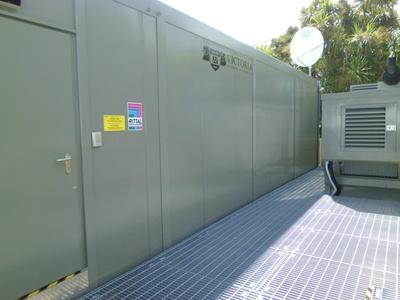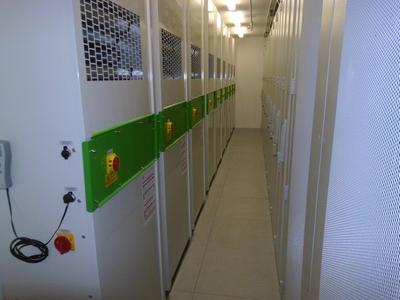Protecting critical data assets from seismic events
Friday, 24 January, 2014
Victoria University is one of New Zealand’s most respected universities, providing teaching and learning for nearly 21,000 students from around the world. Based in the seismically active area of Wellington and subject to several significant earthquakes in recent years, the university’s infrastructure services team was tasked with the development of a disaster recovery (DR) data centre.
Disaster recovery sites are traditionally located in another city, far from the threat of disaster. While a logical solution, this off-site option comes with two distinct disadvantages:
- IT services must travel for frequent data centre maintenance.
- An off-site DR requires IT services to leave family and loved ones in the face of disaster in order to attend to the disaster recovery site.
With this in mind, Victoria University Infrastructure Services Manager Phil Mansford and his team sought to develop a shockproof system that could manage earthquakes and disaster head on; a solution that could be maintained close at hand.
Victoria University had three key requirements: survivability, robustness and standalone operation. This led to the development of QuakeSurfer - a steel platform that essentially surfs over earthquakes. Two years in the making, the in-house innovation was conceived by the university’s own IT staff, developed by engineering firm Dunning Thornton and constructed by MJH Engineering.

During development the team took elements from existing seismic protection technology - ‘base isolators/low gliders’ that protect against horizontal forces. Using data collected from Christchurch quakes, Victoria University determined the necessity to protect against vertical forces as well.
“The QuakeSurfer has two main components: low gliders that use friction to provide the horizontal protection and a horizontal protection system called QuakeSurfer to protect against vertical forces. In this way we create 360° protection,” Mansford explained.
Victoria University chose Rittal to supply a single-source solution for complete data centre infrastructure after exploring the Rittal data centre container on-site at Christchurch’s Orion Energy - a prefabricated, plug-and-play solution. Victoria University found that the product met each of its requirements:
- A single-source data centre incorporating racks, power, cooling, security and remote management.
- Energy efficient thanks to direct free cooling (ensuring a lower PUE of approximately 1.3) and space-saving rack technology.
- Low-cost deployment.
- A trusted brand in the New Zealand market.
Mansford and his team worked with Rittal New Zealand’s sales manager, Brad Riach, and his team to design, order and commission the Rittal data centre container. The Victoria University team saw major savings in the cost of design and development through to installation.

“The deployment time and financial costs are far lower when compared to bricks and mortar,” Mansford said. “The Rittal solution is very low cost for deployment. We believe the cost is considerably less than a comparable ‘in building’ installation when you consider the cost of building fit-out, ducting and fire suppression.”
Rittal’s prefabricated, precertified solution saves ample time in deployment and commissioning. Shipped from Germany 80% complete, the RDCC was completed at Rittal’s Wellington premises then delivered to the site. All this was completed in less than four weeks.
The QuakeSurfer-RDCC solution has received accolades for its flexibility and diversity. It can be deployed as either disaster recovery or a primary data centre space. The product is suitable for locations in the so-called ‘Ring of Fire’ around the Pacific basin, where seismic activity is frequent.
The QuakeSurfer represents a fortified insurance policy for critical assets. Teamed with Rittal’s modular data centre container, the solution represents a shake- and disaster-proof data centre solution for earthquake-affected areas.
“Together they provide a solution that is robust, standalone and will survive any foreseeable disaster,” said Mansford. “For this operation to encounter significant damage, I doubt there would be anyone left to operate the data centre!”
Transforming health care through digitisation
Australian health regulations require medical records to be retained for decades, with physical...
AI hallucinations are eroding trust in lab tools — but there are solutions
Several key factors will shape whether AI becomes a truly reliable scientific partner or remains...
Cutting turnaround times without cutting corners
Modern, cloud-based laboratory information management systems (LIMS) can help avoid many of the...



